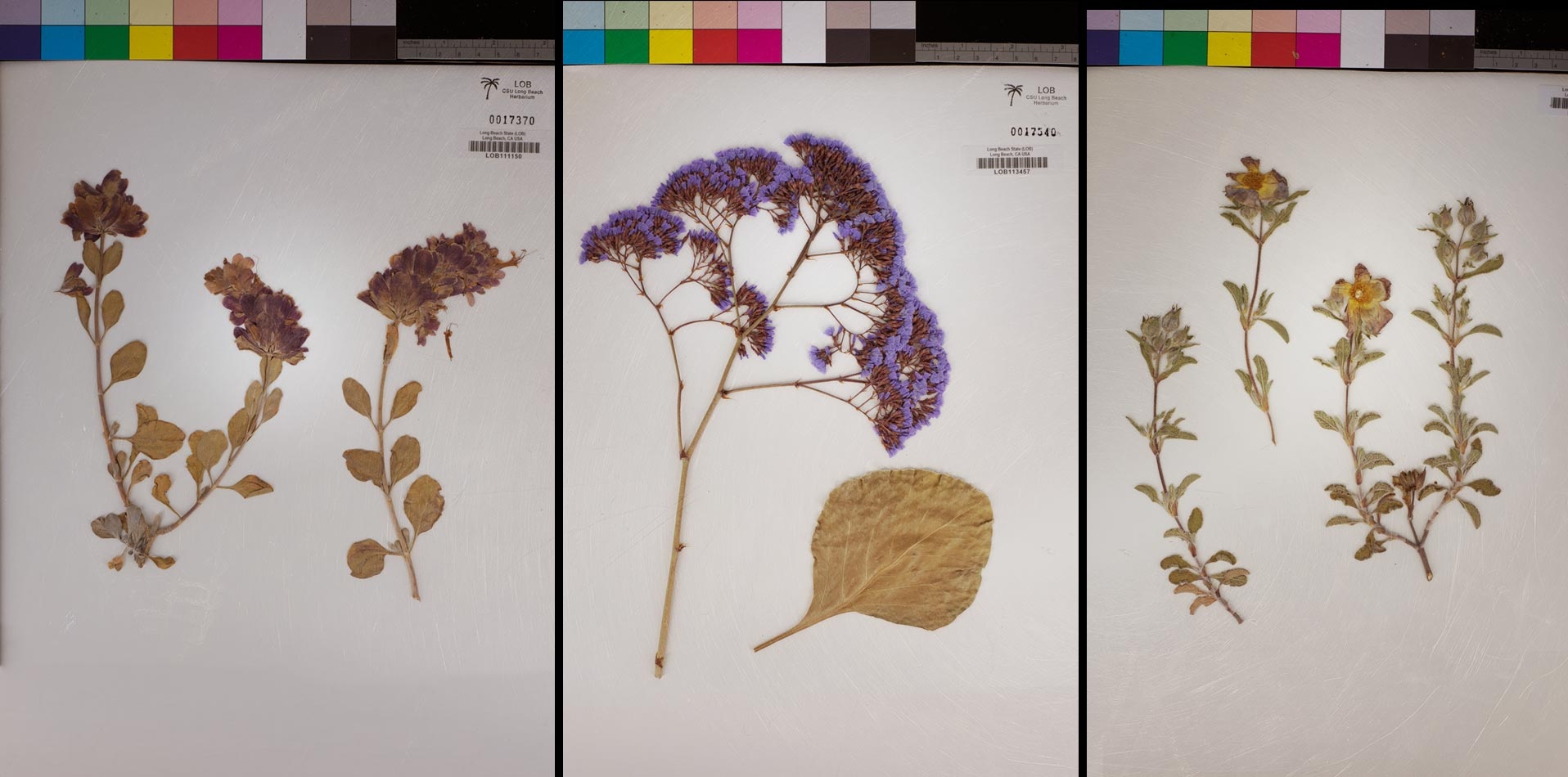University's plant collection now part of national database
As a botanist, Dr. Amanda Fisher studies plants, from flowers to fungi to ferns and mosses. Even weeds.
Up until recently, Fisher has had to rely largely on Cal State Long Beach’s collection of 18,000 physical specimens to conduct her research, dried local plants pressed onto 13x18 sheets on low-acid paper. If she wanted to view others from outside the Long Beach area, she would have to navigate the freeways.
Today, however, with a few clicks of her computer mouse, Fisher, a professor in the biological sciences department, can study hundreds of thousands of digitized specimens from around the country online from a database that now includes those collected by Cal State Long Beach researchers and students.
Fisher received $28,675 of a $1.8 million National Science Foundation grant called “Capturing California’s Flowers” to record digital images of the university’s collection. The funds were distributed among 22 participating herbaria (plant collections) throughout the state, and will produce nearly 1 million digital images.
“This makes it easier to share,” Fisher said. “Having this website is helpful because it would have taken years to go around and visit every collection and go look at the plants and collate the data.”

Cal State Long Beach’s biological department has finished digitizing its required 11,000 records, and the money will be used to improve herbarium infrastructure and support students who will help with the project.
Keeping tabs on the local flora and fauna has become increasing important given the sensitivity of flowering times to the changing climates. Fisher said it’s important to have a thorough understanding of how plants respond, especially since California is home to more than one-third of all plant species in the United States.
“Because of climate change, we can figure out if the time the plants are flowering in California is changing,” Fisher said. “Plants may react differently because of the temperature change and start flowering earlier. They are getting those temperature cues earlier, which affects pollinators, especially migratory ones, who might not be around when the plant is flowering and then it might not reproduce.”
The digital versions of the specimens will not replace the physical ones; they will continue to be housed on campus for deeper research, Fisher said.
“These will maintain their shape and interesting characteristics, such as hairs and other features, for potentially hundreds of years,” Fisher said. “So, potentially this is really important because botanists can come along much later and look at the plant and see if they agree that it is that species and that each specimen has a label.”





